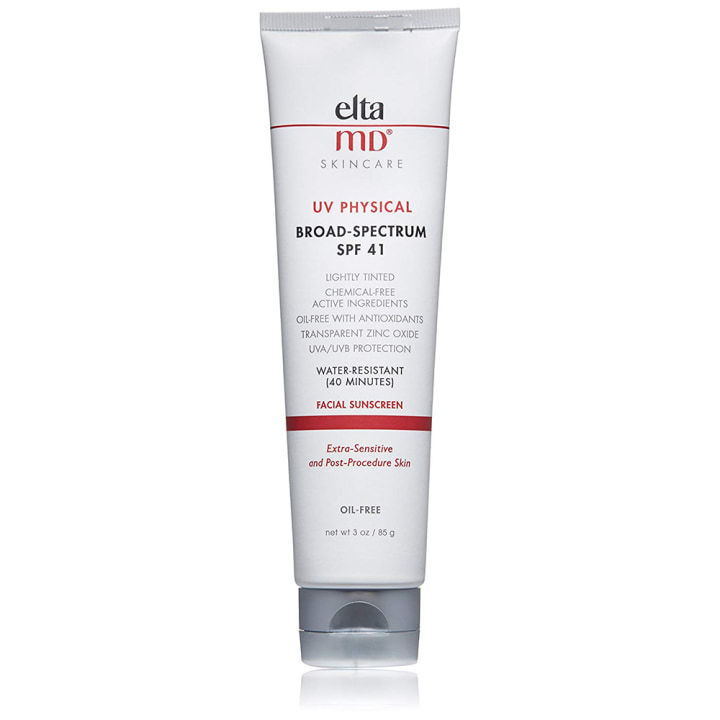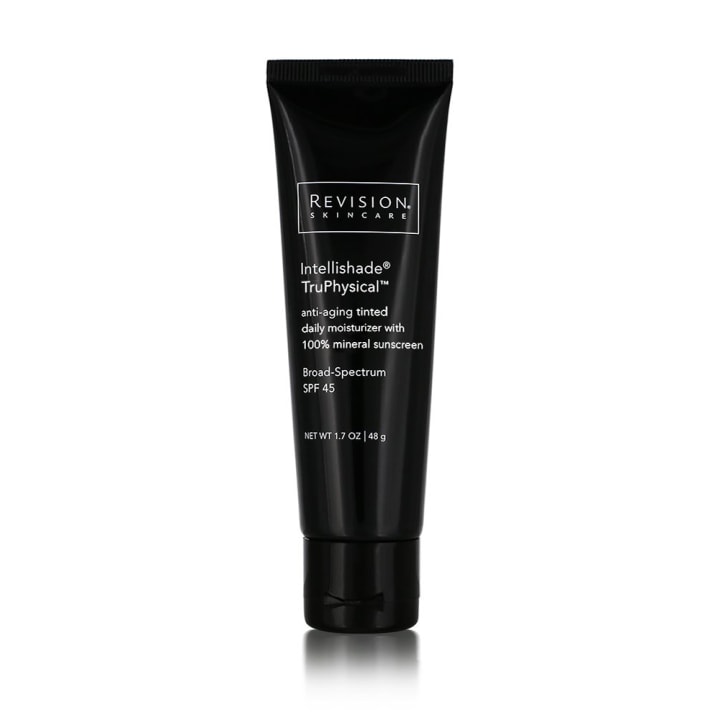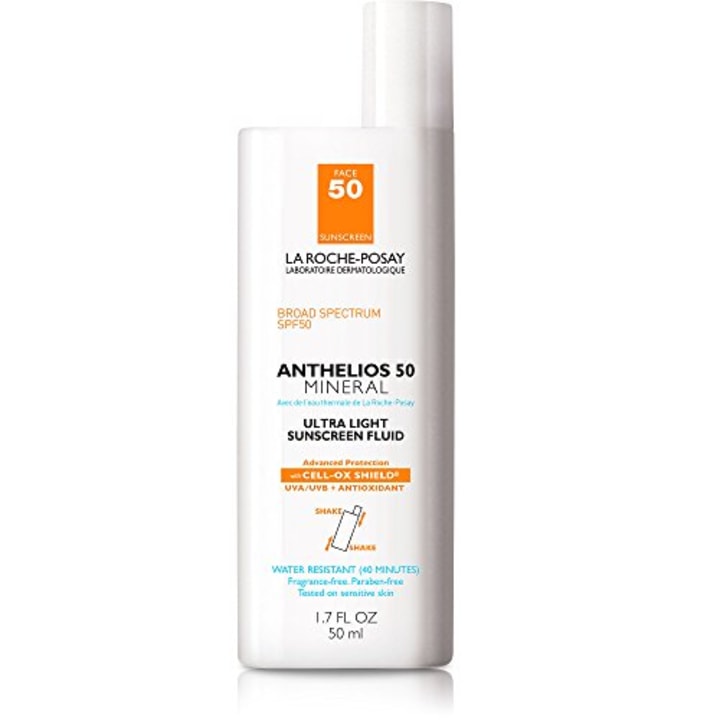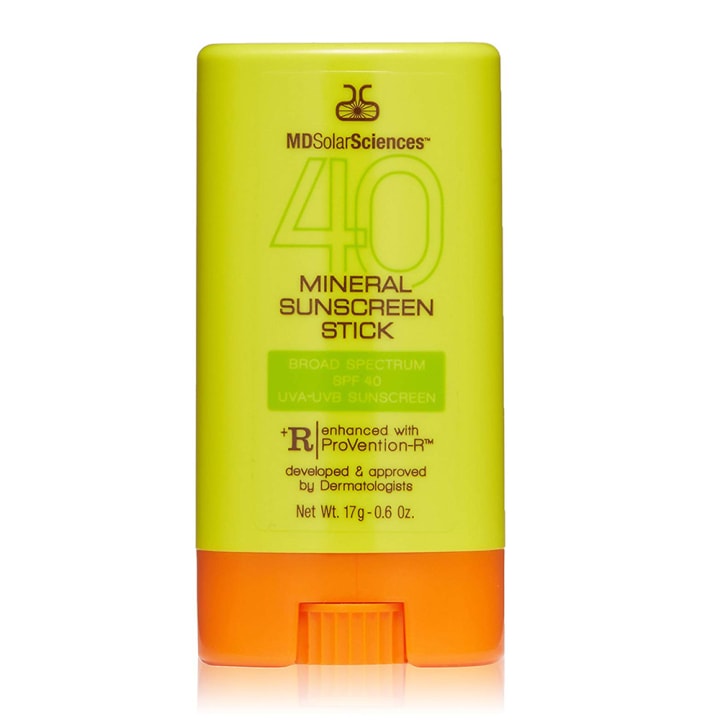With summer just around the corner, it's time to talk UV.
The words "UV protection" is on sunscreen, hats, baby-friendly gear, beach tents and sunglasses. But what really protects us against UV rays — and what, for that matter, does UV actually mean?
To dive deeper into the topic of sun protection, TODAY Style sought out the expertise from the Skin Cancer Foundation and licensed estheticians. Before hitting the beach this summer, you'll be armed with information to take on UV like a pro.
What is UV?
Ultraviolet radiation, according to the SCF, is the "electromagnetic (light) spectrum that reaches the earth from the sun." Unlike physical sunlight, UV rays are invisible to the human eye, but that doesn't make them any less problematic for people enjoying a nice sun bath.
UV wavelengths are classified as UVA, UVB or UVC. UVA and UVB rays are the two that contribute most to premature skin aging, skin cancer and eye damage like cataracts.
What is the difference between UVA and UVB?
UVA rays make up 95% of the UV radiation that reaches the earth's surface, so it's the type of UV radiation people are most affected by in daily life. The SCF reported that while UVA rays are less powerful than UVB, they are 30 to 50 times prevalent, are more intense during daylight hours and can penetrate clouds and glass (hence those one-shouldered sunburns while stuck in traffic).
UVA rays also penetrate the skin more deeply than UVB rays and cause long-term damage such as wrinkles and age spots. UVB affects the outermost layer of the skin and is what causes reddening and burns.
"You can remember what each does by the last letter: UVB(urn) and UVA(ging)," esthetician Rosa Sollecito, owner of the Florida-based skin care line, AloeMoist Organics, told TODAY.
How are UV rays harmful to skin?
- UVA rays:
"Upon initial interaction with the skin, there is no change in feeling. Under the surface of the skin, they stimulate enzymes that break down structural proteins (such as collagen and elastin) and are the leading cause of skin's signs of aging caused by an external factor," Amanda von dem Hagen, a licensed esthetician and international educator for the Colorado-based skin care line Glo Skin Beauty, told TODAY.
"UVA rays also cause significant damage to skin cells in the basal layer of the epidermis, which is where most skin cancers occur," she continued.
- UVB rays:
UVB rays are responsible for sunburns and discoloration in the skin and, like UVA rays, can also cause skin cancers.
While UVB rays are present year-round, they are more detrimental during certain times of the year, depending on location, time of day and season. They can be reflected off surfaces like snow or ice, so they hit the skin twice.
According to the SCF, UVB hits the U.S. the strongest between 10 a.m. and 4 p.m. from April to October. Still, it's safe to lather up during the winter months, especially when hitting the slopes.
The best sunscreens, according to dermatologists
According to Dr. Tina Alster of the Washington Institute of Dermatologic Laser Surgery, the most important thing to look for when shopping for sunscreen is the label "mineral sunscreen." Many drugstore sunscreens have synthetic ingredients made from chemicals to make them more affordable, but Alster noted some brands, like Neutrogena, have developed a mineral option.
Alster finds that sunscreens laden with other ingredients can cause breakouts easily, especially because the skin becomes more sensitive when exposed to the sun.
The other key ingredient to look for is zinc oxide.
"Some inorganic ingredients for protecting ourselves from the sun are minerals such as zinc oxide or titanium dioxide; they act as a physical sunblock. They reflect UV rays. Of these two ingredients, I think zinc oxide is the safest as compared to titanium dioxide, which has toxic, heavy metal content," Sollecito told TODAY.
Sollecito advises looking for sunscreens with "non-nano," or not micronized zinc oxide, as the sole active ingredient on the label. This also makes it a suitable sunscreen for children under 6 months of age.
For adults who may not want to limit their options, sunscreens with titanium dioxide are still approved by the Food and Drug Administration.
- 1. EltaMD UV Physical Tinted Broad-Spectrum SPF 41 Sunscreen, $23, Walmart
Alster loves this mineral sunscreen that offers lightweight protection. She told TODAY one of the best things for women who are looking for a daily broad-spectrum sunscreen is to look for one that can act as makeup too. EltaMD offers a tinted or non-tinted option and is specifically formulated for the face.
- 2. Revision Skincare Intellishade Truphysical Moisturizer, $50, Walmart
"I use this as my foundation in the summer due to its higher SPF," Alster told TODAY.
The Revision line may be a bit of a splurge item, but it has anti-aging properties, protects skin against cancer, spots and burns and acts as makeup — so it's basically three products in one.
- 3. La Roche-Posay Anthelios Ultra-Light Mineral Sunscreen SPF 50, $29 (usually $34), Amazon
This sunscreen by the medical-grade skin care company La Roche-Posay is affordable and armed with the right ingredients. Alster enjoys that it comes in a tinted and non-tinted option.
- 4. MDSolarSciences Mineral Sunscreen Stick Broad Spectrum SPF 40, $18, Amazon
MDSolarSciences stick sunscreens are a convenient way to ensure people continuously protect their skin. Alster keeps a stick of sunscreen in her car at all times for those pesky moments when sunlight shines a little too bright on one area. She also advises readily applying it to the nose, lips and areas surrounding the eye — all of which need a little extra TLC when it comes to UVA and UVB protection. The stick even comes in a kid-friendly version!
Looking for more sun protection for summer? Check out:




